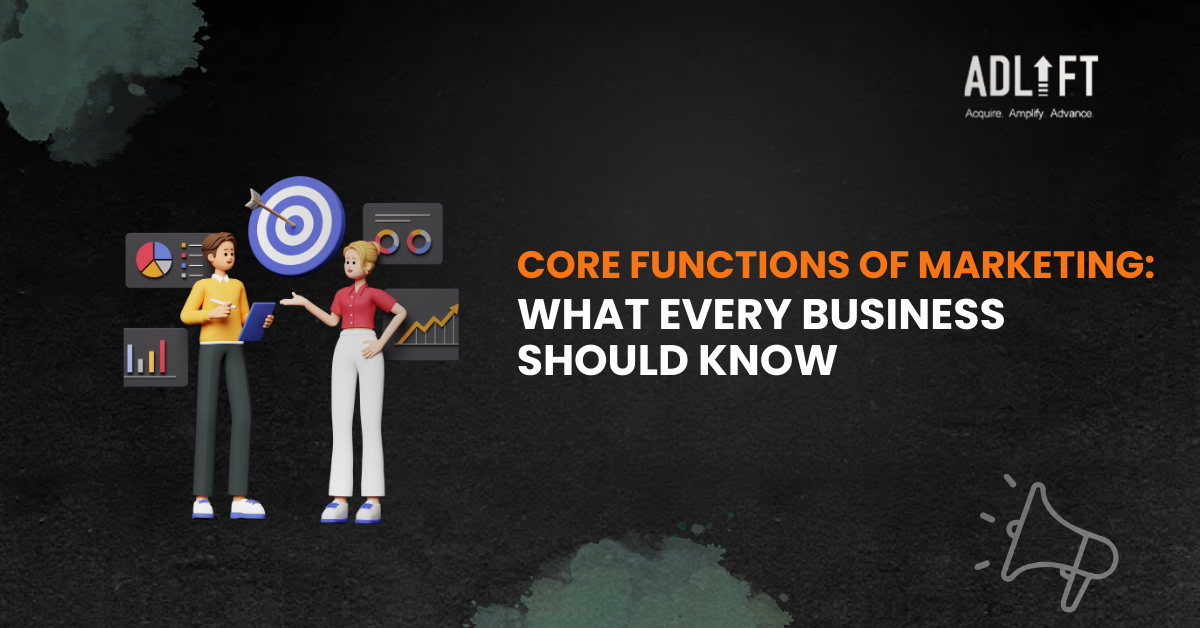Core Functions of Marketing: What Every Business Should Know

Core Functions of Marketing: What Every Business Should Know
In the bustling marketplace of today, understanding the core functions of marketing is crucial for any business aiming to thrive and connect with its audience effectively. Marketing is not just about selling products or services. It’s a comprehensive process that involves multiple layers and strategies to meet the needs of both the business and its customers.
The functions of marketing encompass a range of activities, from product development and pricing strategies to promotion and distribution. Let’s delve into these functions to understand their significance and how they interconnect to drive business success.
Understanding the Market and Consumer Needs
The foundation of effective marketing lies in understanding the market and the needs of the consumers within it. This involves thorough market research to gather insights about consumer preferences, behaviors, and trends.
Businesses need to identify who their target audience is, what they desire, and how their needs are evolving. This knowledge is pivotal in developing products or services that meet those needs, thereby fulfilling one of the essential functions of marketing.
Product Development and Management
Once a business understands its market and consumer needs, the next step is product development. This function of marketing involves designing and creating products or services that satisfy customer demands. It’s not just about the physical product but also about its features, quality, and the value it offers to the consumers. Product management continues even after the product is launched, with ongoing improvements and adaptations based on customer feedback and market changes.
Pricing Strategies
Determining the right price for products or services is another critical function of marketing. The price needs to reflect the value of the product, be competitive in the market, and yet be profitable for the company. Pricing strategies can vary widely, from premium pricing for luxury goods to penetration pricing to gain market share quickly. Effective pricing involves understanding the cost of production, the perceived value to the consumer, and the pricing of competitors.
Promotion and Communication
Promotion is perhaps the most visible aspect of marketing. This function involves communicating with potential and existing customers about the product, its benefits, and why they should choose it over others. Promotional activities can include advertising, sales promotions, public relations, and digital marketing campaigns. The goal is to create awareness, generate interest, and ultimately drive sales.
Distribution and Placing
The distribution function of marketing focuses on making the product available to the consumer at the right place, time, and quantity. This involves decisions about distribution channels (such as retailers, online platforms, and direct sales) and logistics. Effective distribution ensures that products reach their intended market segments efficiently and cost-effectively.
Selling and Transaction Facilitation
Selling is the direct interaction with the customer to facilitate the purchase of the product or service. This can involve personal selling, where sales representatives interact directly with customers, or it could be through an online sales platform. The aim is to make the buying process as smooth and appealing as possible, encouraging the customer to make a purchase.
Customer Service and Relationship Management
After-sales service and maintaining customer relationships are crucial marketing functions that can significantly impact a business’s success. Providing excellent customer service ensures customer satisfaction, fosters loyalty, and can lead to repeat business and referrals. Relationship management involves building long-term connections with customers, understanding their ongoing needs, and ensuring they are met.
Feedback and Market Analysis
The final core function of marketing involves analyzing market trends, customer feedback, and the overall performance of marketing strategies. This information is vital for making informed decisions about future marketing tactics, product development, and other business strategies. Continuous market analysis helps a business stay relevant and competitive in a changing market.
The Bottom Line
Mastering the core functions of marketing is indispensable for any business aiming to establish a strong presence in today’s competitive marketplace. By focusing on these essential functions, businesses can ensure they not only meet but exceed customer expectations, fostering loyalty and driving long-term growth.
Remember, successful marketing is not just about individual campaigns or sales figures. It’s about creating a comprehensive strategy that leverages each of these functions to build a brand that resonates with consumers and stands the test of time. As we navigate the ever-evolving landscape of consumer preferences and market dynamics, the functions of marketing remain the guiding stars that can lead businesses to achieve their objectives and secure their place in the hearts and minds of their customers.
